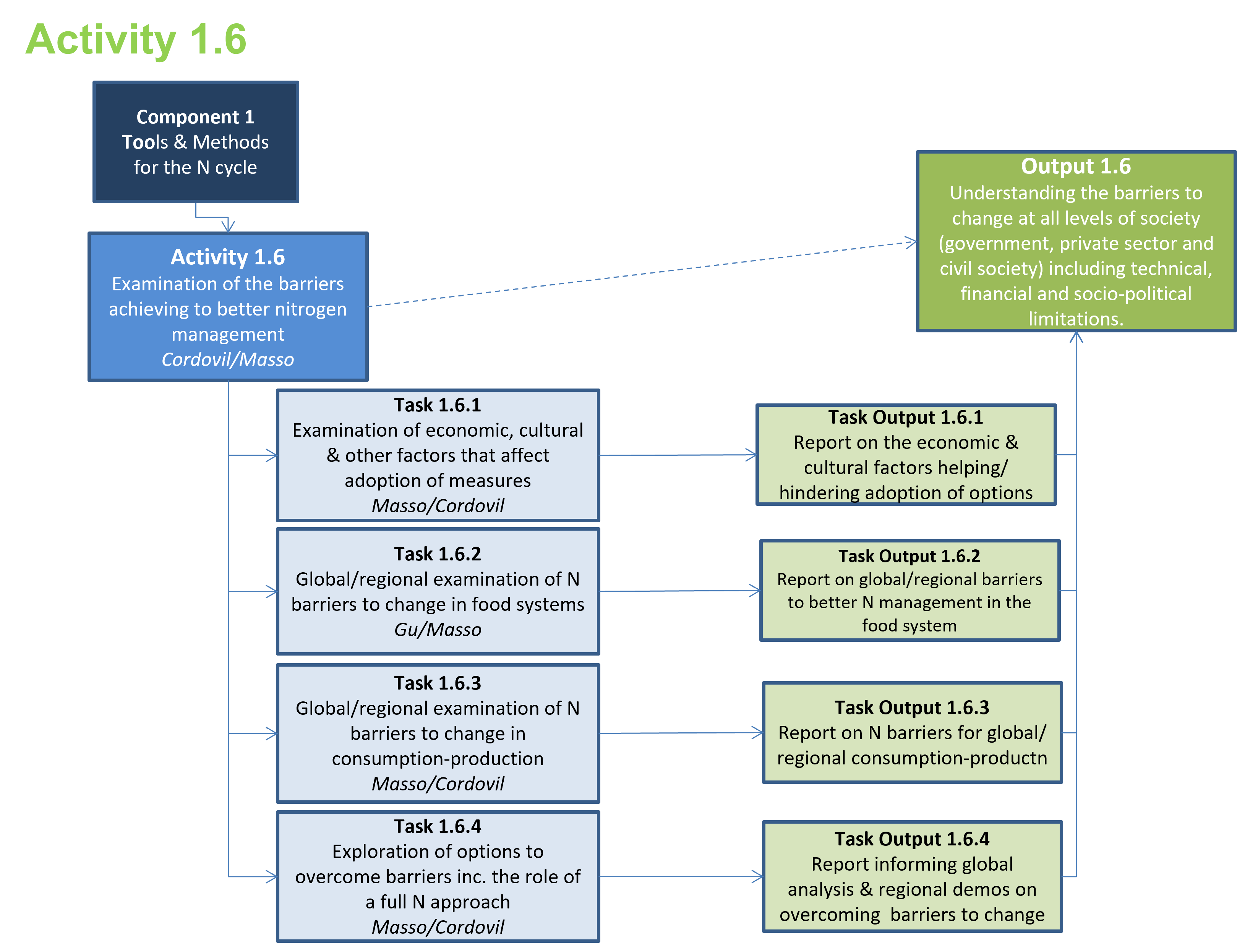Activity 1.6 - Examination of the barriers achieving to better nitrogen management
The preceding tasks provide the necessary models, tools and indicators for examining options for better management of the global nitrogen cycle, however only marginally address the social, economic and cultural issues. In this regard the cost-benefit analysis (Activity 1.4) is an important contribution, especially if the conclusion is that taking actions to improve nitrogen management can be shown to have net benefits for society (the benefits of action exceeding the costs). This has already been the conclusion of previous work, such as Our Nutrient World, which concluded that the value of N saved by reducing losses would typically be larger than the cost to business of saving it, for example in farming systems, and that the benefits in terms of cleaner air, water etc are even larger.
In this case, the question is therefore raised: if the benefits of improved nitrogen management outweigh the costs, what are the barriers that are preventing change? This activity is focused on addressing this question, which then leads towards consideration of the options that can help overcome the barriers. Such barriers may be related to lack of awareness, dominant priorities for regional food and energy sufficiency and economic growth, the need to kick-start new markets, trade-related issues or over-dominance of an existing paradigm of a lack of integration, with the result that the full-scale extent of the win-wins is not appreciated. The present activity therefore tests one of the hypotheses of INMS that a joined up approach to nitrogen management will more clearly profile the multiple win-wins to taking action (for food, energy, water, air, climate, ecosystems, soils etc).
The Activity is structured as four tasks. Firstly a scoping study considers the range of potential barriers, in relation to all major N flows and differences in regional soci-economic development. This part therefore includes all major reactive N sources: agricultural fertilizers, biological nitrogen fixation, nitrogen oxides formation in combustion sources, as well as recycling opportunities including manures and human waste flows.
The second and third tasks focus on special challenges, linked to the food system and to human consumption choices, respectively, especially as these link to behavioural change among farmers, land managers and citizens. Finally, the last task explores the options for overcoming barriers to change, including the potential for developing ‘the gravity of common cause’ though the full nitrogen approach.
Activity 1.6 is being delivered under Component 1. The diagram below shows the tasks and task outputs deliviered for this activity.

